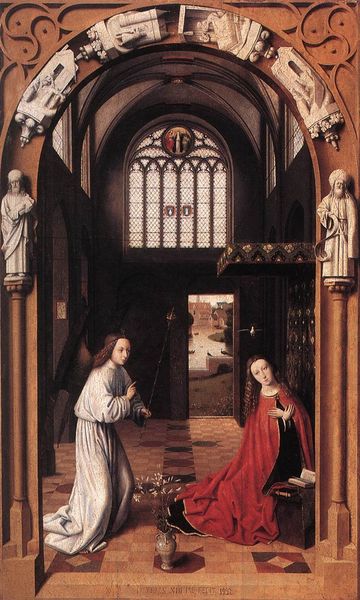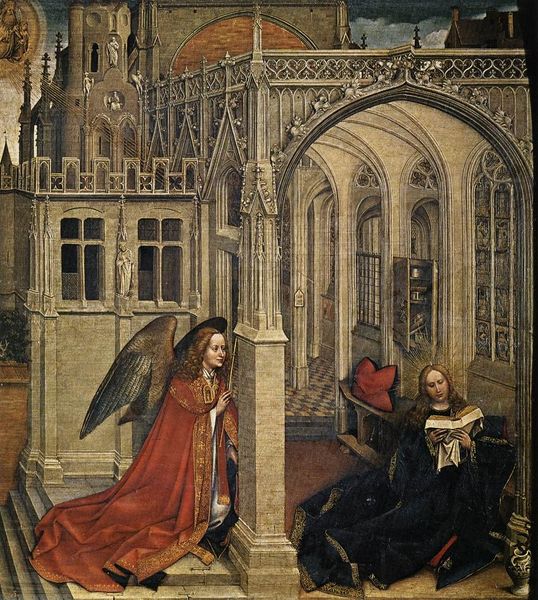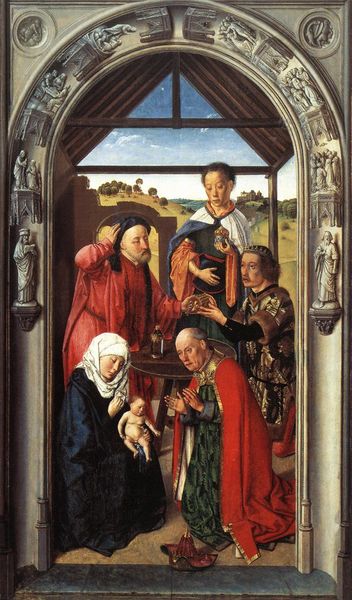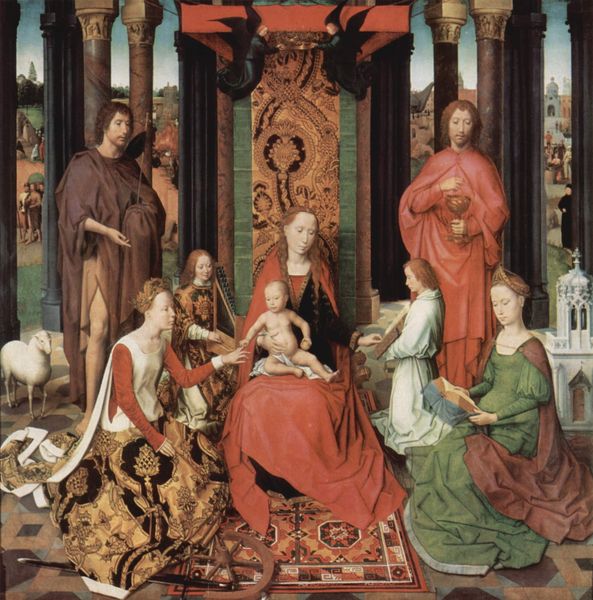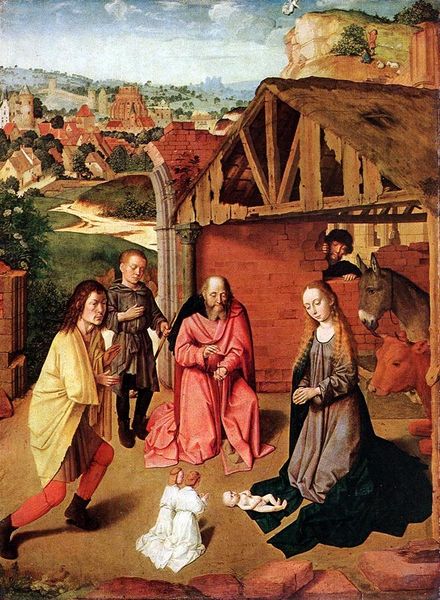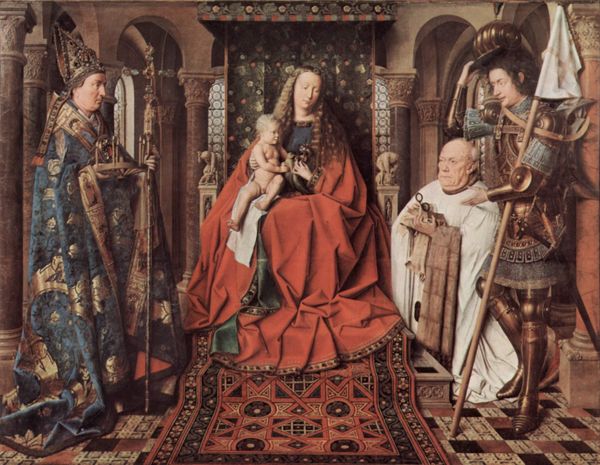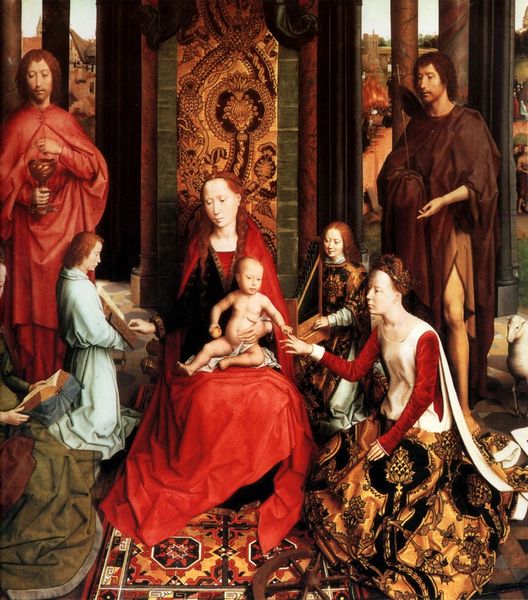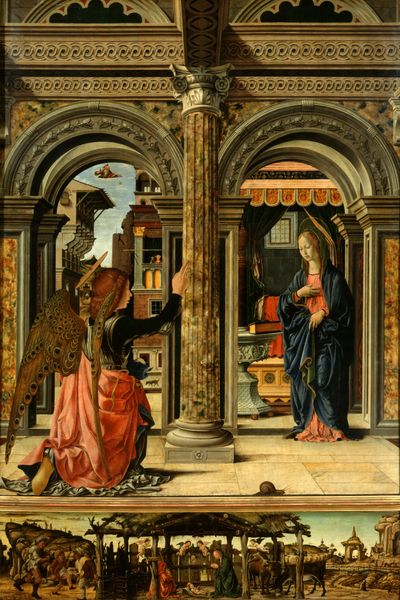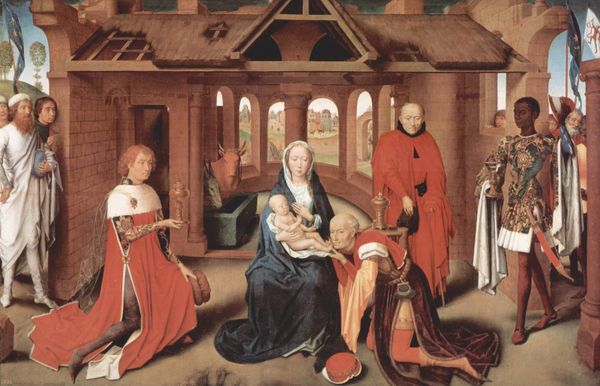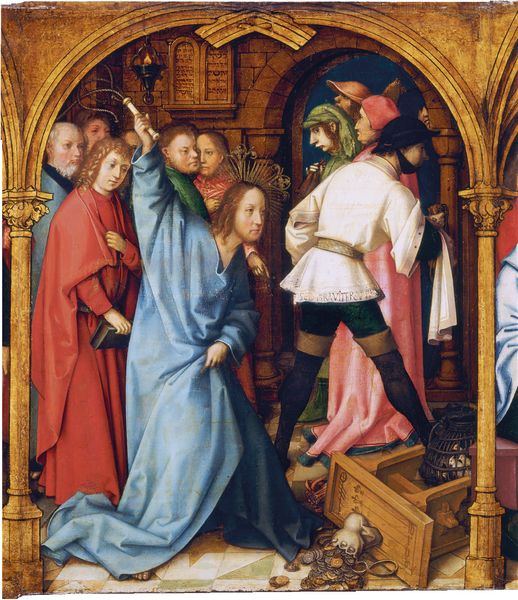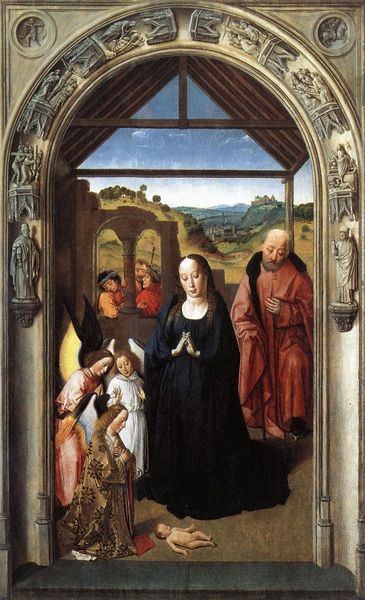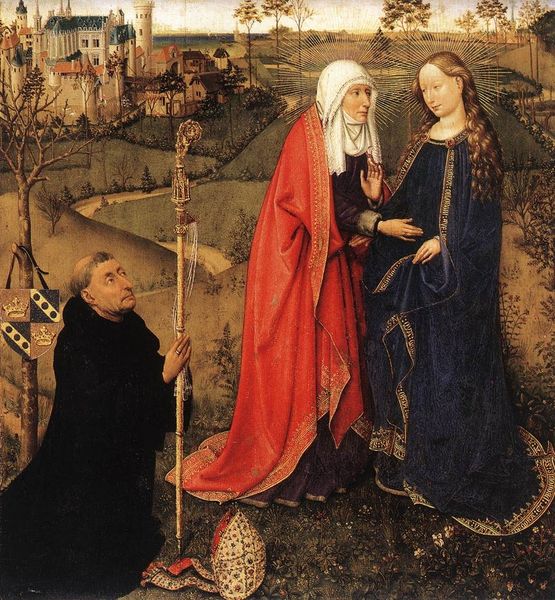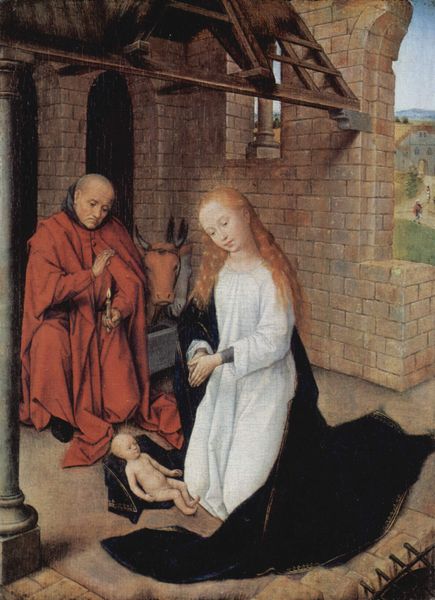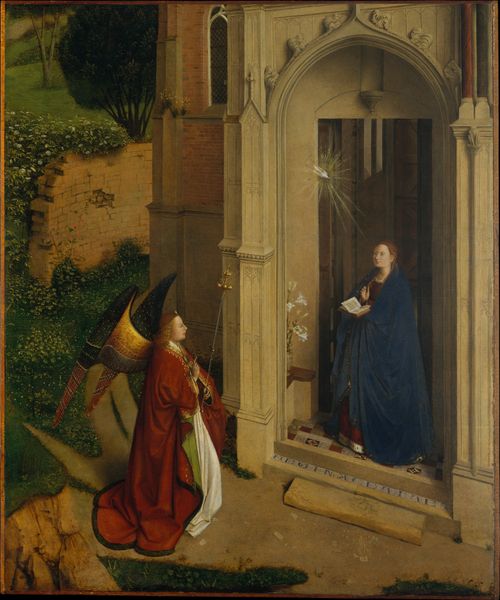
painting, oil-paint
#
portrait
#
painting
#
oil-paint
#
landscape
#
holy-places
#
child
#
costume
#
christianity
#
genre-painting
#
early-renaissance
#
virgin-mary
#
miniature
#
angel
Dimensions: 66 x 62 cm
Copyright: Public domain
Editor: We’re looking at Jan van Eyck's "The Rolin Madonna," painted around 1435, an oil painting currently housed in the Louvre. It's remarkable how Van Eyck merges the interior space with an expansive landscape. The juxtaposition creates a fascinating contrast, don't you think? What formal qualities stand out to you in this work? Curator: Indeed. Focusing on the visual structure, the painting operates on a distinct division: the earthly and the divine. Van Eyck constructs a precise pictorial space through the meticulous arrangement of figures and architectural elements. Note the orthogonals of the tiled floor converging toward a vanishing point that is disrupted, however, by the ambiguity of the middle ground. Does the space extend linearly, or do these shifts produce a more nuanced understanding of perspective? Editor: That's interesting; it makes me question how the exterior view plays into the scene. Curator: Exactly. The garden and the city visible through the loggia contribute to a formal tension. The architectural elements frame this world, yet the detailed rendering pulls it forward. Furthermore, consider the texture. Van Eyck renders the Chancellor's garments, the Madonna’s cloak, and even the distant buildings with astonishing precision. What does this emphasis on materiality contribute to our reading of the piece? Editor: It seems to enhance the realism, yet the setting is clearly symbolic. It's like two different styles of representation working together. Curator: Precisely! And that tension – the interplay between the real and the symbolic, the earthly and the divine – that's where the painting finds its formal power. Looking closely, we find a complex harmony created through juxtaposition and detailed rendering, leading to deeper contemplation. Editor: I see it now; it’s the formal oppositions and the almost hyperrealistic textures that give the piece its unique character. Curator: Exactly! Close visual analysis unlocks those tensions.
Comments
No comments
Be the first to comment and join the conversation on the ultimate creative platform.
